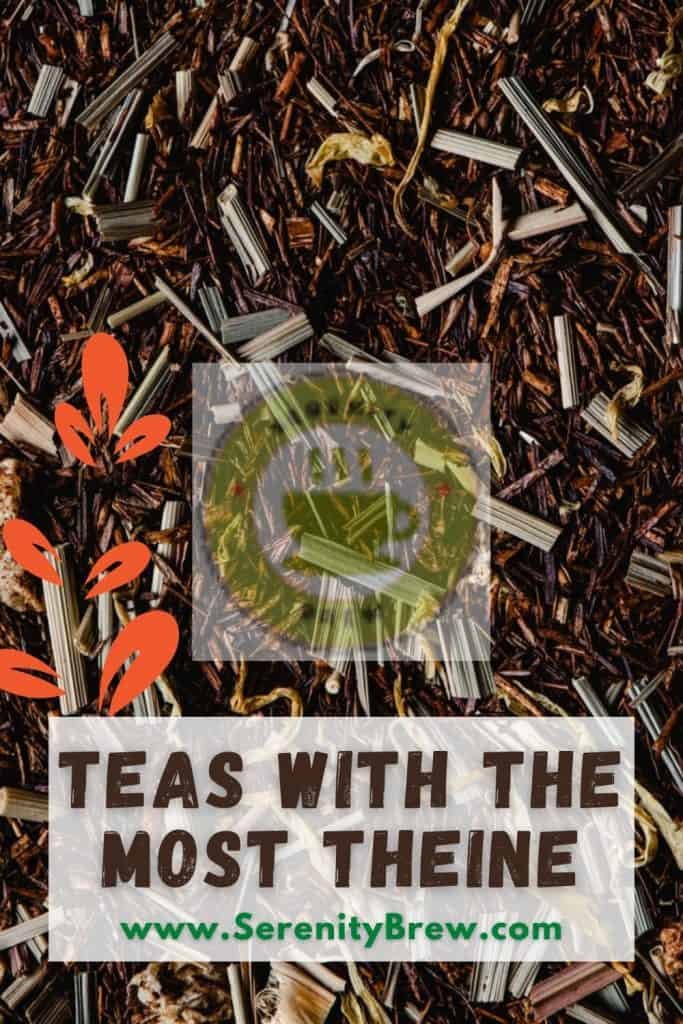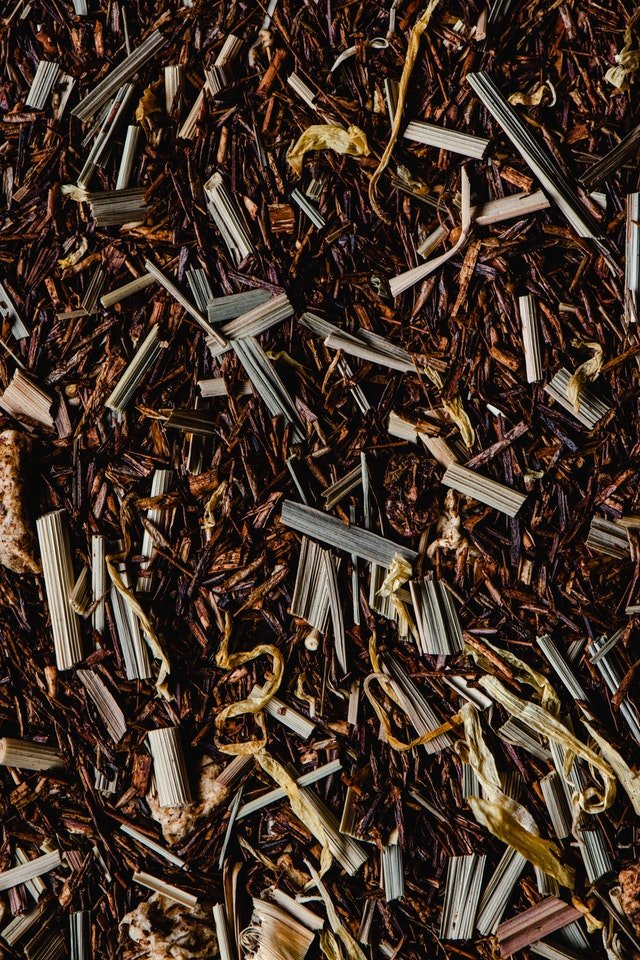
The right tea can activate you in a similar way that a coffee would. Theine, naturally present in the leaves of the tea bush (Camellia sinensis), is the same substance as caffeine. Its name varies simply because we are talking about tea and not coffee.
However, the world of teas is vast and their properties, flavors and theine content are different. Do you know which is the tea with the most theine? Join us to review our classification of teas and their theine content.
Do you want to be productive? Why is tea better than coffee?
Caffeine is a stimulating substance naturally present in some plants, including coffee beans and Camellia sinensis leaves, or our well-known tea plant. Precisely, due to their stimulating effect, these two drinks are in the top three of the most consumed in the world, behind water.
Now, does caffeine act the same as theine? Yes and no. By this answer we mean that there are several factors that cause the caffeine in coffee and the caffeine in tea to be absorbed and act differently. Let’s see what they are.
The first of these is concentration. Although the amount of caffeine in a tea or coffee can vary, in general, the concentration of caffeine in a coffee is much higher. While a cup of espresso coffee contains around 212 mg per 100 g, a cup of black tea contains an average of 20 mg per 100 g, almost 10 times less. Thus, drinking a cup of coffee gives our body, all at once, a much larger amount of caffeine to process, but there is more.
Another compound called L-Theanine is involved in the absorption of caffeine from tea by our body. This substance slows down its absorption, prolonging it over time and achieving a stimulating effect but without the ups and downs of coffee. We could then speak of a feeling of relaxed alertness.
An interesting study compared the effects on the brain of consuming caffeine alone or in combination with L-Theanine. The results suggest that L-theanine and caffeine in combination are beneficial for improving performance on demanding cognitive tasks.
In short, if you need to wake up to work or do some demanding task, replace the usual coffee with a tea with a lot of theine.
Teas with the most theine
Identifying the tea with the most theine is not easy, since the concentration of this element in each tea depends on factors as varied as the altitude where the tea leaves have been harvested, the oxidation time to which it was subjected and even, the infusion time. However, after processing data in various ways and in a general way, we present our ranking of teas by theine content.
1. The mate
At the top of the ranking we mention an infusion, not a tea itself. The traditional infusion of Argentina and Uruguay, the famous mate, is characterized by a series of benefits, among which its stimulating properties stand out. These derive from their caffeine content.
It is usually pointed out that each 150 ml of infusion mate provides 78 mg of caffeine, thus being comparable to the stimulating effect of coffee.
2. The tea with the most caffeine: black
Topping the list of teas with theine is black tea. The different references indicate that it has between 20 and 100 mg of theine per 100 grams of product, depending on the variables indicated in the introduction to this section. The states that a 237-ml cup of black tea contains between 25 and 48 mg of theine.
However, for example, Assam and Darjeeling teas have approximately 50-100mg of caffeine per cup, if brewed at 10g/1l. For its part, Ceylon tea usually has between 50 and 90 mg per cup, of course depending on the time of infusion and the variables mentioned above.
3. matcha tea
Being matcha tea a variety of green tea, it could be inferred that it has less caffeine than black tea, however, this is not the case. The tea used for the Japanese tea ceremony is made by crushing whole leaves. Thus, when drinking a cup of matcha, you ingest the powder with which it is prepared and therefore, a greater amount of tea than when using bags.
One teaspoon of matcha tea is considered to provide 68 mg of theine, compared to 32 mg found in the same amount of green tea.
4. Oolong tea
Number four is occupied by oolong tea, also known as blue tea. This generally has considerably less caffeine than black tea: between 10 and 60 mg of theine depending on whether it is a more or less oxidized oolong.
5. Green tea
Green tea, famous for its possible slimming effects, has a theine content that could be called medium, between 25 and 29 mg/100 g. This is because, despite using young leaves for its preparation, they undergo a minimal oxidation process that generates a more moderate amount of protein than in those mentioned above.
6. White tea
As it is a slightly oxidized tea, since it is basically collected and dried, it has less caffeine than the varieties mentioned above. In fact, some researchers point out that its content would be less than 1 mg.
7. Pu-erh tea
Red tea can have more or less the same theine content as white tea since it is also a slightly oxidized tea, although it is fermented to obtain its curious color and particular flavor. However, we have not found reliable references in this regard.
How you can increase the caffeine content of your tea
A tea with more theine may be the result of simply varying some factors related to its preparation. Let’s see them one by one:
- The chosen leaves: the leaves, petioles and branches used in the elaboration of each kind of tea also influence the amount of caffeine. Those who are younger have a higher concentration of caffeine than those who are older.
- The oxidation of the leaves: the oxidation time to which the leaves are subjected directly affects the concentration of caffeine. A highly oxidized tea will have more caffeine than a minimally oxidized tea.
- Infusion time: beyond the fact that each tea has a specific content of theine due to its oxidation level, the infusion time can also increase its concentration. Thus, a longer rest concentrates more caffeine in the water.
- The temperature of the water: did you know that if you infuse at high temperatures, a greater amount of caffeine is extracted from each variety of tea?
- Tea Format: Generally, broken leaves (such as those used in tea bags) tend to remove more caffeine when brewed than whole leaves.
In addition to these variables related to the preparation, factors related to the climate affect the development of a greater amount of caffeine. Sun exposure, for example, makes those varieties of tea that are grown in the shade have a higher concentration of caffeine due to changes in chlorophyll and amino acids, than those that are grown and harvested in the sun. Other factors such as the composition of the growing soil and the climate also play an important role in the development of the caffeine in each tea.
What if I look for a tea without theine?

Teas contain theine to a greater or lesser extent depending on the variety. If you want a drink without caffeine, either because you have high blood pressure, are pregnant or are breastfeeding, you can opt for an herbal tea: rooibos. Known as tea, it really isn’t because it doesn’t come from the Camellia Sinensis plant and, here’s the good news, it doesn’t have theine.
On the other hand, you can also opt for infusions of herbs or fruits that do not provide theine or caffeine to your body.
Now that you know approximately the theine content of each variety of tea, you can choose the one that best suits your tastes and needs each day.
